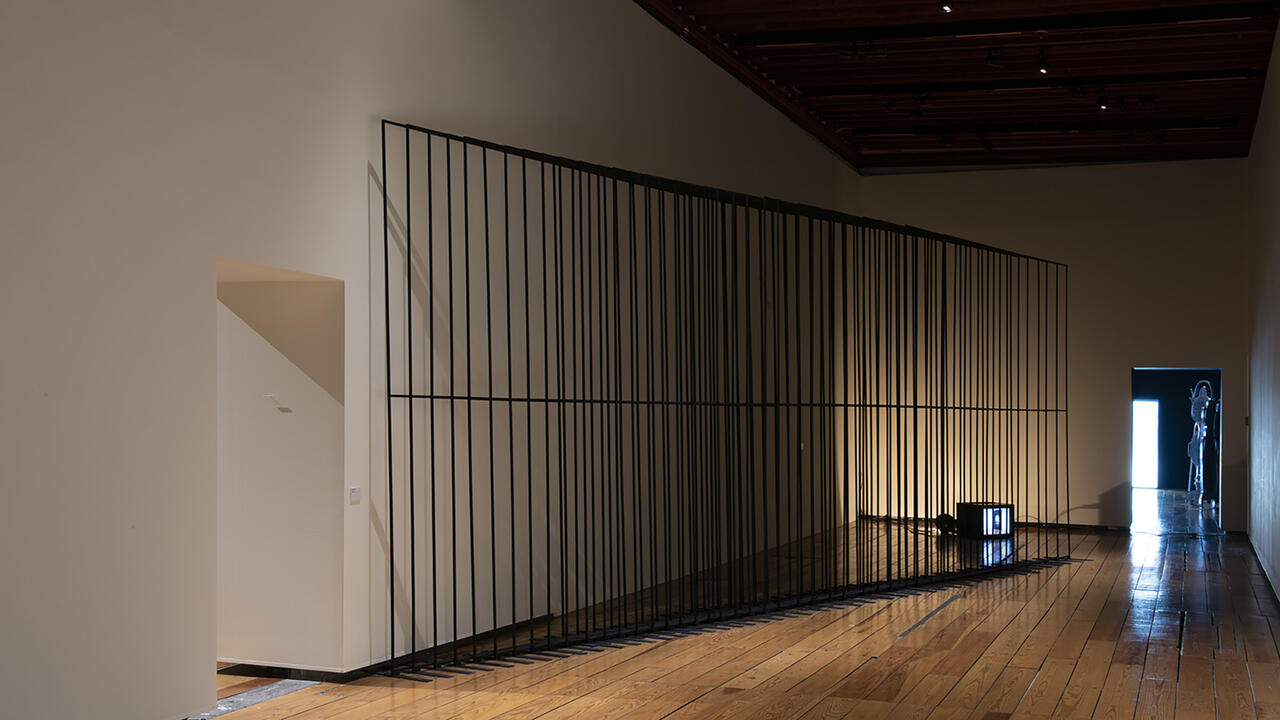Bernd Krauß
Kölnischer Kunstverein
Kölnischer Kunstverein

One could have mistaken Bernd Krauß’s exhibition Das ist heute möglich (This is possible today) for an exhibit in an ethnographic museum. Or a display of archaeological finds. Look at this odd culture, the artist seemed to say, I found all these objects and put them in order. Yet they were not in a museum of ethnography. And the culture at stake was not something from a faraway land or a distant past but Western Europe, sometime between the late 1970s and the early 1990s. So what was going on here?
Krauß took the visitor time travelling to a recent past which was at once mystifying and recognizable. The large ground floor of the Kunstverein was cluttered with all sorts of ordinary objects, perhaps memorabilia from the artist’s childhood: plastic straws, soda cans, beer coasters, IKEA storage boxes, wooden clothes pegs, worn-out bath towels, television sets and camping chairs. There were corks, old socks, electric cords, bamboo, advertisements for Chanel parfumes and Max Factor beauty products (featuring the voluminous hairdos typical of the 1970s–80s), bed sheets, teapots, porcelain cups and imitation leather. And lots of terry cloth and styrofoam. Yet the objects have been put together in ways that do not make sense. Avocado (2005), for instance, features a crumpled avocado cast in bronze and placed on a pillow. Ex- Große Drecksau (Ex Big Dirty Sow, 2003) pairs socks with electrical cords. Krauß takes a familiar reality and turns it, if not upside down, then at least on its side. Shuffled around, it becomes something new to explore, full of uncharted possibility.
On the one hand, Krauß’s reshuffling draws attention to the ridiculous trash our culture has produced. If this is what we leave behind, I couldn’t help thinking, we’ve got little to be proud of. On the other hand, his reshuffling tells us that this culture can be reconstructed and reclaimed, no matter how commodified and standardized it has become. The only thing you need is a bit of engagement and imagination. Krauß works objects to evoke memories one might relate to, memories that stick to the plastic and the Styrofoam as much as to our skin: playing silly games on a Sunday afternoon in Große An- und Ausziehuhr (Big Dressing and Undressing Clock, 2003); inadvertently stepping in dog shit in Kinderfuß mit Scheiße drauf (Child’s Foot with Shit On It, 2012); building magic objects from scrap in Magic can (2003). The artist does not just want to make us realize we have been producing and consuming crap all our lives, as some artists have suggested (Wim Delvoye comes to mind). Without denying it is shit (there is definitely some comedy involved in acknowledging just how shitty some things are), he tries to show that shit can still be fertile ground – manure, after all, provides perfect soil for growing new plants.
By taking objects and experiences from our everyday existence and by turning them into something else, Krauß crafts new possibilities. His ramshackle installations make clear that he is not a professional craftsman. Nor does he want to be. He seems to be the embodiment of the proud amateur, the DIY-er. He tries his best with what he can get his hands on. This is possible, he seems to say. What else can be done? It doesn’t always work out. But he tries. Here, I think, he might just have succeeded.














